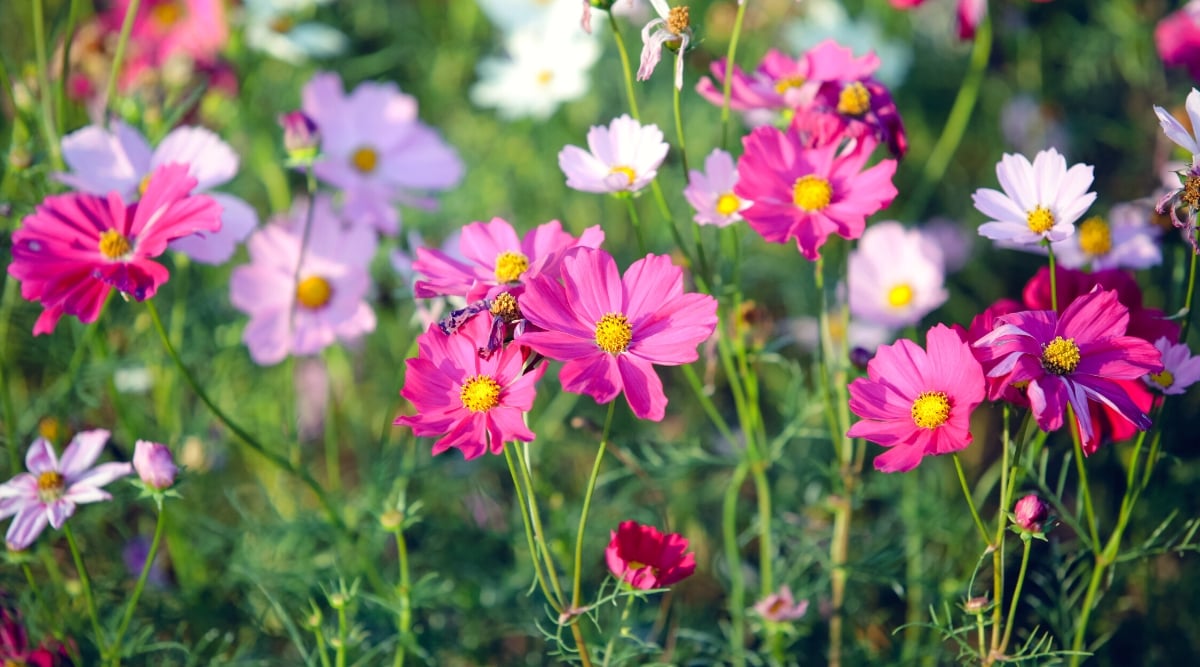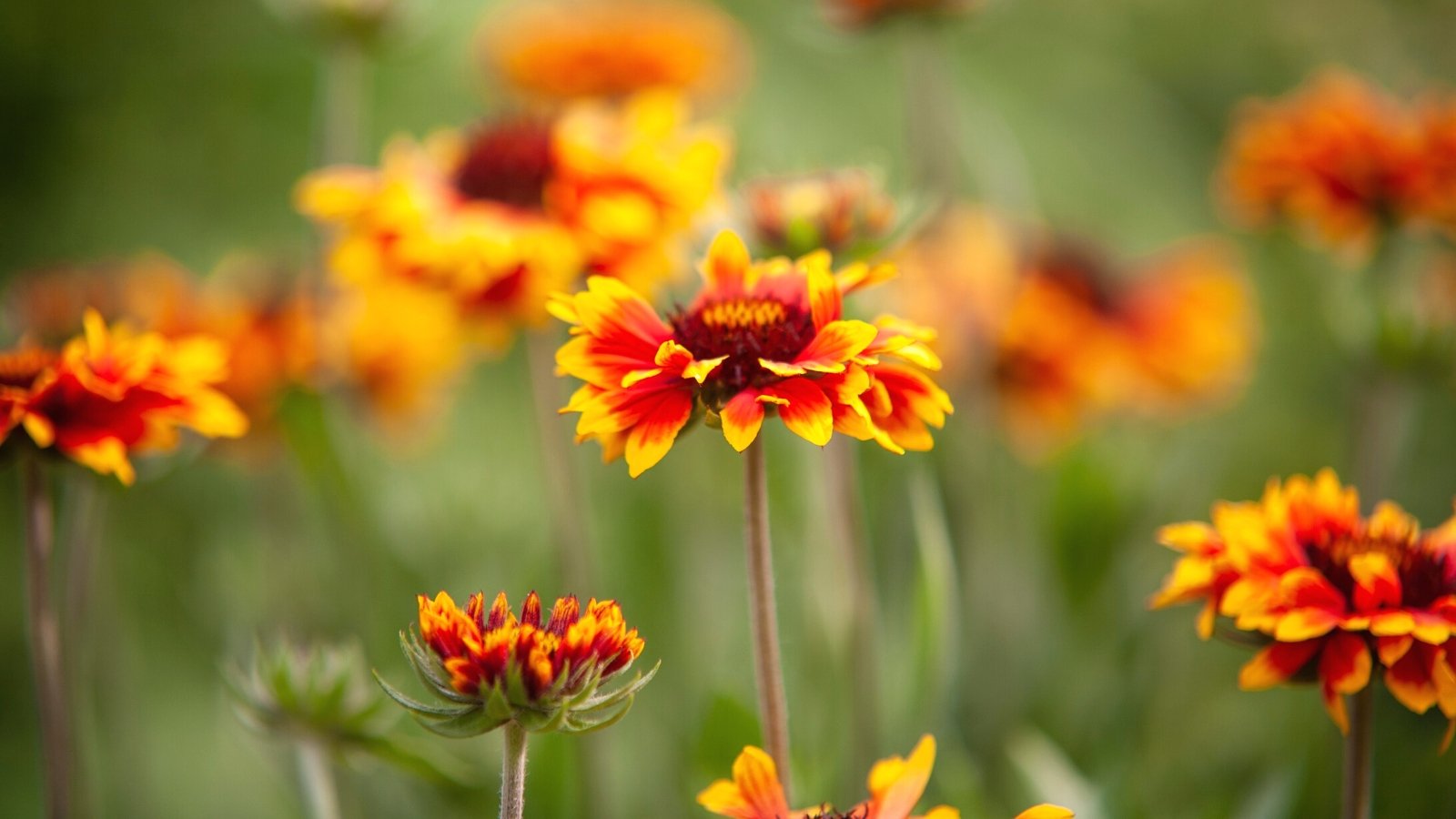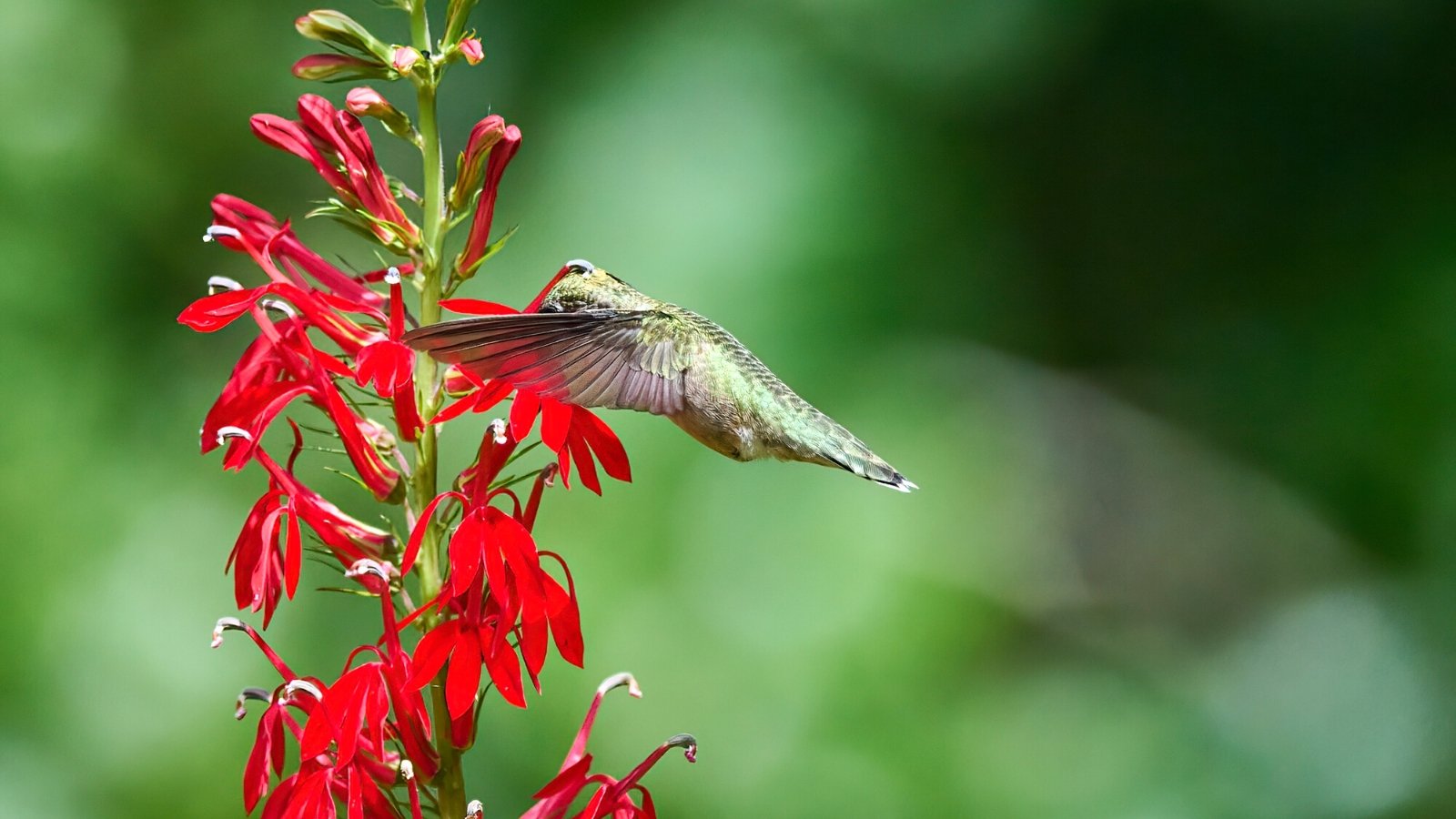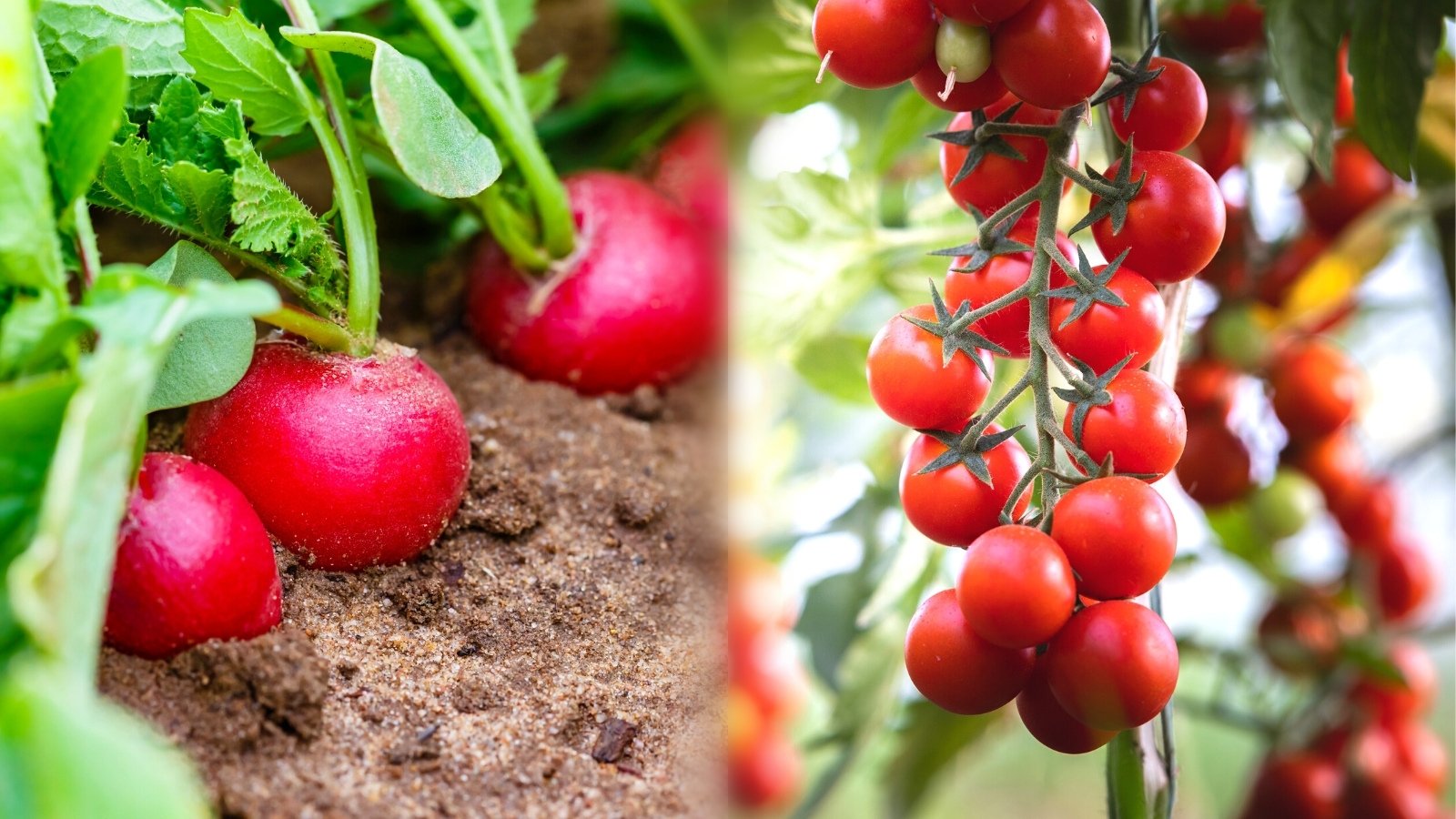As the first butterflies and hummingbirds arrive for the season, everything is growing and blooming with that fresh spring vigor. For me, spring is the rainy season. The grass is green, and the flowers are perky. But I know that summer is coming, and with it, the hot weather and frequent periods of drought that are common to my area.
When you live in a hot climate or one that regularly experiences long periods of drought, maintaining a pollinator garden can be arduous and costly. Collecting rainwater for use during these periods is great if you have the necessary equipment. However, this adds even more overhead to maintaining your plants.
Going away on a summer vacation can mean coming home to a garden full of scorched plants that, at best, need several weeks of regular watering to revive them. At worst, the plants may be completely done for. This means a return to the nursery to replace all of those plants that you spent time and money nurturing through the spring.
While extra watering is a good solution to keeping your pollinator garden happy, a great alternative is to create a pollinator garden with as many drought-tolerant plants as possible. Here are 27 of my favorite pollinator plants that manage to endure hot summers and can even go a few days without water.
Allium

Botanical Name: Allium sativum
- Sun Requirements: Full Sun
- Height: 12”-36”
- Hardiness Zones: 3-8
Allium is one of the best flowers for a pollinator garden that doesn’t get rain regularly. These ornamental onions prefer soil that is on the dry side, as too much moisture will lead straight to root rot. In addition to their drought tolerance, they are unappealing to deer and rodents, and most pests won’t bother them either.
However, pollinators will flock to them. Their pretty, puffy, purple flowers are brimming with sweet nectar to bring bumble bees and honey bees to your garden. Bees are particularly attracted to purple flowers as they see this color clearest.
Aster

Botanical Name: Aster
- Sun Requirements: Full Sun to Part Sun
- Height: 1’-6’
- Hardiness Zones: 3-8
Asters are wonderful little flowering plants that bloom near the end of summer, as many other plants are preparing for cooler weather. They are not picky about soil type, and once established, they grow like wildflowers. They don’t mind the heat and can go for long periods without watering.
I’m a big fan of any plant that draws Monarch butterflies to my garden, and asters do exactly this. Of all the flowers in my garden (besides one other flower), my asters attract the most Monarchs. They love these little purple flowers so much that they will hang around while I snap photos of them at close range.
Beardtongues

Botanical Name: Penstemon
- Sun Requirements: Full Sun
- Height: 1’-5’
- Hardiness Zones: 3-9
Beardtongues are a wonderfully diverse group of plants. They come in many sizes and quite a few colors, including orange, purple, pink, red, blue, white, and yellow. Planting more than one variety can keep you flush with blooms throughout the spring, summer, and fall months. They also make lovely cut flowers.
These plants like sandy, infertile soil that has excellent drainage. Once they are established, they are considered extremely drought-tolerant. Beardtongue attracts several types of bees, including leafcutter bees, sweat bees, and especially young bumblebees. Honeybees will also visit these plants.
Bee Balm

Botanical Name: Monarda
- Sun Requirements: Full Sun
- Height: 1’-4’
- Hardiness Zones: 3-9
Bee balm is not the most drought-tolerant on the list, but it certainly is resilient as long as it gets some water every 7-10 days. It will keep producing flowers that pollinators relish.
This member of the mint family is fast-growing and produces a lot of flowers. It attracts bees, both native and honey bees, hummingbirds, and hawk moths.
Blanket Flower

Botanical Name: Gaillardia
- Sun Requirements: Full Sun
- Height: 2’
- Hardiness Zones: 3-9
Blanket flower is a great, low-maintenance flowering plant that will bring pollinators to your garden. This one should not need much supplemental watering except during extended dry periods. Once every week or two in times of drought is plenty, as this plant does not like wet feet.
The bright red and yellow flowers on this plant are very appealing to all kinds of bees and provide them with a vital source of nectar in drier weather. Butterflies are also attracted to this member of the aster family.
California Lilacs

Botanical Name: Ceanothus
- Sun Requirements: Full Sun to Part Sun
- Height: Varies by Species
- Hardiness Zones: 5-10
It probably won’t surprise you to hear that California Lilacs are native to the West Coast of North America. The subgenera Cerastes is particularly drought tolerant, and these plants are also evergreen. There are between 50-60 species in the genus, and they range in size and growth habits from ground cover to shrubs to climbing vines.
Ceanothus produces clusters of wonderful blue-violet flowers that are sweetly fragrant and attractive to birds, bees, hummingbirds, and butterflies. This highly versatile plant is easy to maintain and requires little to no fertilizing or supplemental watering.
Occasional watering in summer won’t hurt as long as the soil is allowed to dry completely between waterings. In addition to their value as an ornamental and pollinator plant, California Lilacs are nitrogen-fixing, so they are great neighbors!
Catmint

Botanical Name: Nepeta
- Sun Requirements: Full Sun
- Height: 12”
- Hardiness Zones: 3-8
Catmint is known for being a virtually no maintenance plant. It makes a great border, is virtually pest and disease free, and doesn’t require watering except in the most dire of droughts. It is a hybrid of catnip, though, so while it won’t attract deer and rodents, you might catch your kitty rolling around in it from time to time.
The purple flower spikes on this plant are highly attractive to all kinds of pollinators. Purple is a bee’s favorite color, and butterflies and hummingbirds will also visit catmint. It is a long bloomer, beginning to produce flowers in late spring, throughout the summer, and into the fall months.
Columbine

Botanical Name: Aquilegia
- Sun Requirements: Part Shade
- Height: 1’-3’
- Hardiness Zones: 3-9
Columbine is a beautiful, graceful plant with unique and colorful flowers. Growing to an average height of 18” tall, Columbine is surprisingly tolerant of soil conditions and drought tolerant for a plant that is typically considered a woodland plant.
Columbine should be kept moist in its first year but will develop a very long tap root, allowing it to collect more water than many plants of its size.
The often bicolored flowers are lovely and cheerful. These spring bloomers provide a great source of nectar for hummingbirds and will also draw bees and butterflies to the garden. Plant Columbine in partial shade for the best results.
Common Sunflower

Botanical Name: Helianthus annuus
- Sun Requirements: Full Sun
- Height: 5’-10’
- Hardiness Zones: 2-11
Sunflowers of all kinds are wonderfully drought-tolerant, heat-loving plants that thrive on neglect and are a great food source for many types of wildlife.
These bright, sunny flowering plants have deep root systems that allow them to access deeper moisture in the soil, as well as anchoring them, allowing them to reach towering heights.
Not only are sunflowers a great food source for bees, they also provide an incredibly valuable health benefit to honey bee hives. Studies show that proximity to sunflowers dramatically reduces the occurrence of varroa mites in a hive. Since this is the number one killer of honey bees, sunflowers are an absolute must for beekeepers.
Coneflower

Botanical Name: Echinacea
- Sun Requirements: Full Sun
- Height: 3’
- Hardiness Zones: 3-9
Purple Coneflower, or Echinacea, is a great addition to the pollinator garden. Preferring well-drained soil, with no particular need for a specific soil type, these versatile plants can survive hot, dry weather quite well. They are self-sowing and need little care from their owners, making them a wonderfully low-maintenance perennial plant that thrives on neglect.
Echinacea is said to be an immune booster for humans, and it’s great for pollinators, too. Hummingbirds, bumble bees, and butterflies will seek out these colorful, daisy-like blooms for their abundance of nectar.
Coral Honeysuckle

Botanical Name: Lonicera sempervirens
- Sun Requirements: Full Sun
- Height: up to 20’
- Hardiness Zones: 4-10
Also known as Trumpet Honeysuckle, this is another plant that I have enjoyed watching grow and flourish in my yard, and I can’t say that I ever watered it beyond the first few weeks after planting.
It takes a year or two to take off fully, but once it does, give it something to climb, and you will have the most gorgeous trellis in the neighborhood.
The trumpet-shaped flowers on this vine are difficult for bees to access, but hummingbirds and butterflies will have no problem accessing this ample source of nectar. In hardiness zone 8, this vine is evergreen. I’m impressed with how well it survived lower temperatures. It will drop its leaves in the winter in colder climates.
Cosmos

Botanical Name: Cosmos
- Sun Requirements: Full Sun
- Height: 2’-3’
- Hardiness Zones: 2-11
Cosmos are a drought-tolerant member of the Aster family that is native to Mexico. Young plants should be watered regularly until they establish roots. Once established, Cosmos are nicely drought tolerant and need no fertilizer. They readily reseed themselves, making them a great, low-maintenance flowering plant that will return year after year.
The cheerful flowers produced by the Cosmos are cup-shaped and come in pink, red, yellow, orange, white, and burgundy. Butterflies are especially attracted to these flowers, but they also appeal to bees, both native and honey, as well as hummingbirds.
Larkspur

Botanical Name: Delphinium
- Sun Requirements: Full Sun
- Height: 5’
- Hardiness Zones: 3-7
Sadly, this is one pollinator plant that is unlikely to thrive in my zone, and it is gorgeous. Larkspur is a stately plant with tall spikes covered in wonderful pink, white, and blue blooms that attract all kinds of pollinators. They grow quite tall, making a wonderful perennial backdrop in your pollinator garden.
Larkspurs need well-drained soil, as standing water will lead to rot. Their fragrant flowers make wonderful cut flowers and are very appealing to hummingbirds for their abundance of available nectar. They will attract butterflies as well.
Firespike

Botanical Name: Odontonema cuspidatum
- Sun Requirements: Full Sun to Part Shade
- Height: 4’-6’
- Hardiness Zones: 8-12
This plant always surprises me with its resilience. While it will remain evergreen in warmer climates, it is not particularly cold-tolerant. Mine dies back to the ground every year, with the first freeze knocking out most of the foliage overnight.
It loves the heat, and this plant performs best in the hottest months of summer, reaching up to 6’ tall with brilliant plumes of red tubular flowers.
Firespike is mainly sold as a hummingbird attractor, although I personally see tons of butterflies paying this plant regular visits. Bees are pretty indifferent to it as they do not see the color red. Other pollinating insects love it, and it is a really impressive-looking plant that makes a great background for other, smaller plants.
Foxglove

Botanical Name: Digitalis
- Sun Requirements: Full Sun to Part Shade
- Height: 1’-3’
- Hardiness Zones: 4-9
Foxgloves are stunning additions to the pollinator garden with their tall spires of bell-shaped flowers. They are very tolerant of sandy or clay-heavy soils, and once established, they are also drought-tolerant. That said, they will bloom best with occasional watering. These plants will appreciate a bit of shade in the afternoon if you live in a very hot climate.
The flowers this plant produces are deeply tubular, so they are difficult for shorter-tongued pollinators to access. Their main pollinators are long-tongued bumble bees, but hummingbirds will also visit these pretty flowering plants.
Globemallow

Botanical Name: Sphaeralcea
- Sun Requirements: Full Sun
- Height: 3’
- Hardiness Zones: 4-9
Globemallow is a wonderfully long blooming perennial that is also very drought tolerant. Blooming from February through November, it is one of the longest-blooming plants on our list, which makes it an important food source for pollinators. With grayish-green leaves and tall stalks of bright orange flowers, this is an interesting and attractive plant.
While it is very drought-tolerant, it will produce even more flowers during wetter years, with plants being entirely bursting with brilliant blooms. Globemallows actually have a particular species of bee that is responsible for pollinating their flowers, but they also attract other types of bees and butterflies too!
Goldenrod

Botanical Name: Solidago
- Sun Requirements: Full Sun to Part Shade
- Height: 2’-5’
- Hardiness Zones: 2-8
This North American wildflower genus comprises about 100 species, 8 of which are cultivated as perennial garden plants. This is a late summer and fall bloomer that is unassuming for most of the year, but during its season, the long thin stems are topped with fluffy confections of bright yellow flowers. It is exceptionally drought tolerant and will let you know when it needs a bit of water when the leaves droop.
These grow bountifully by the roadside in my city, and I often have some growing in my backyard. You see, I adore monarch butterflies, and they love their goldenrod! There are a whole group of other pollinators that love the protein-rich pollen that this plant provides, as well.
Lavender

Botanical Name: Lavendula
- Sun Requirements: Full Sun
- Height: 2’
- Hardiness Zones: 5-9
I often hear gardeners say that lavender is difficult to grow, and perhaps it has something to do with the humidity here in the South. Lavender is actually very well suited to hot, dry climates, and it thrives in poor soil conditions. If you live in a more humid climate, I recommend growing lavender as a container plant. Mine is very happy in both pots and a raised bed, because it gets good drainage this way.
Different types of lavender grow well in different climates. Once you find your type, it is actually very easy to care for as it needs no fertilizer and only needs water occasionally.
Both bumblebees and honey bees are attracted to the fragrant, purple flowers lavender produces, and if you keep bees, as a bonus, lavender can affect the flavor of honey.
Milkweed

Botanical Name: Asclepias
- Sun Requirements: Full Sun
- Height: 3’-6’
- Hardiness Zones: 4-9
If, like myself, you are a Monarch butterfly lover, this is the top plant to have in your pollinator garden. The reason is that milkweed is the larval food of the Monarch butterfly, so they actively seek it out and lay eggs on it. If you keep milkweed around, you will get to see the Monarch’s entire lifecycle play out in your backyard.
There are different species of this plant that are native to different parts of North and Central America, where Monarchs live. If you live in the Southeast, Swamp Milkweed is the optimal choice as it helps prepare the butterflies for migrating across the Gulf of Mexico.
I have heard it said by more than one gardener that you don’t plant milkweed because it looks pretty. A team of 5 or 6 caterpillars can strip a plant bare in a few days’ time, and then you have a bundle of stems until the leaves grow back. In the meantime, though, you have a yard full of butterflies, and that’s the whole point of a pollinator garden.
Moss Rose

Botanical Name: Portulaca grandiflora
- Sun Requirements: Full Sun
- Height: 8”
- Hardiness Zones: 3-9 as Annual, 10-11 as Perennial
Moss Rose, commonly known as flowering Portulaca, is a low-growing plant native to South America. Considered semi-succulent, this plant can survive and produce colorful flowers with only occasional watering, as they are native to very hot, dry climates. The flowers come in many colors and petal formations and commonly resemble roses.
This is a great plant for attracting beneficial insects like bees and butterflies. However, you won’t see many harmful insects hanging around the Moss Rose. It is quite pest and disease resistant. I think it makes a lovely hanging plant, and I enjoy all of the different and unique petal formations.
Porterweed

Botanical Name: Stachytarpheta
- Sun Requirements: Part Sun to Full Sun
- Height: 5’
- Hardiness Zones: 9-10
Porterweed is another plant that I will always keep in my pollinator garden. Although it dies back to the ground every winter here in zone 8, it returns each year in the spring, and by mid-summer, it is covered in bright blue flower spikes that are always abuzz with my favorite pollinators, bumblebees.
Once established, porterweed is considered drought tolerant and will let you know with drooping leaves if it needs a drink. While I love that it brings the bumble bees, my favorite thing about porterweed is its effect on the hummingbirds. Hummingbirds love this plant so much they will visit despite human presence. If you want to observe hummingbirds up close, this is the plant to bring home.
Purslane

Botanical Name: Portulaca oleracea
- Sun Requirements: Full Sun
- Height: 3”
- Hardiness Zones: 2-12
Purslane is another type of Portulaca, so it is semi-succulent and does excellently in hot, dry weather with poor soil quality and good drainage. This low-growing plant is edible and commonly used in salads and sauces for human consumption.
It is happiest in full sun to part sun, and if it appears to be lacking in the flower department, give it a little water, and it should bring back the small, yellow blooms.
Purslane is toxic to pets, including dogs, cats, and horses, but not to humans. Its flowers are very rich pollen and nectar producers, attracting a wide berth of pollinators, including bees, butterflies, and other pollinating insects.
Black-eyed Susan

Botanical Name: Rudbeckia hirta
- Sun Requirements: Full Sun
- Height: 2’-3’
- Hardiness Zones: 3-10
Black-eyed Susans are one of the sturdiest flowering plants I can think of. They thrive in average, well-drained soil, full sun, and are very drought-tolerant once established. This perennial plant is also deer resistant and resistant to most destructive pests, except for aphids, which can sometimes be an issue.
This plant blooms in its first season when planted from seeds, so you won’t have to wait long for this one to start attracting pollinators. It attracts honey bees, beetles, and many varieties of butterflies, including monarch butterflies. Pollinators are attracted to the bullseye-type appearance of the flowers. The dark centers are made up of tiny, nectar-rich flowers.
Russian Sage

Botanical Name: Petrovskia atriplicifolia
- Sun Requirements: Full Sun
- Height: 3’-5’
- Hardiness Zones: 4-9
Recall that bees are most attracted to purple flowers, and it’s not difficult to see why this next plant makes the cut. Russian Sage is a tough, heat-loving, fast-growing perennial that tops out around 4’ tall with large sprays of purple, flower-topped stems. This incredibly low-maintenance plant is resistant to pests and deer and has a long summer blooming season.
While other woodland creatures are not attracted to this plant, pollinators definitely are. Russian sage feeds many types of bees, butterflies, and hoverflies. This is a nectar plant, so place it near pollen plants to offer pollinators the winning combination.
Salvia

Botanical Name: Salvia
- Sun Requirements: Full Sun to Part Sun
- Height: 5’-6’
- Hardiness Zones: 4-10
Salvia, also known as sage, is a great, long-season bloomer. Many varieties come in several sizes and flower colors. Some have aromatic flowers and foliage, such as pineapple sage with its sweet-smelling leaves and bright red flowers.
Salvia is known for being hardy and drought-tolerant, even during the hottest summer months. They are happy to remain blooming even in the middle of summer when many flowering plants need a break to survive the heat.
I have a purple salvia that attracts tons of hummingbirds, bumblebees, and butterflies. I can tell you firsthand that this is a foolproof plant in the garden. They grow quickly and flower prolifically for an extended blooming season.
Sweet Almond Bush

Botanical Name: Aloysia virgata
- Sun Requirements: Full Sun to Part Shade
- Height: 15’
- Hardiness Zones: 8-11
This is one of my personal favorites and a plant that I recommend to anyone who likes to watch bees at close range with no concern that they will pay you any mind. It also is incredibly resilient and drought-tolerant. It is only hardy in zones 8-11, so it’s best to keep it in a container if you’re north of that.
Sweet Almond Bush isn’t actually related to almonds, but it has the fragrance of fine almond-scented soap, which is where it gets its common name.
The flowers grow in long clusters at the end of branches and bloom throughout the summer and fall. These are the last flowers in my yard in hardiness zone 8; the bumble bees and honey bees can’t get enough. It also rivals my confederate jasmine in how much scent it throws.
Wallflower

Botanical Name: Erysimum
- Sun Requirements: Full Sun to Part Sun
- Height: 1’-2’
- Hardiness Zones: 6-10
These lovely herbaceous perennial plants have a shrubby appearance and produce clusters of beautiful, brightly colored, fragrant blooms. The flowers can be orange, blue, yellow, red, pink, purple, or white. This plant grows best in very well-drained soil. It likes mostly sun in northern climates but prefers a bit of afternoon shade in the South.
Wallflowers are great nectar producers, luring many types of bees with the promise of a sweet meal. Bumblebees and native bees are big fans of the brightly colored blooms, although honey bees are not as fond of this plant. Butterflies and hummingbirds will also visit these flowers during their late spring blooming season.
Final Thoughts
There are a host of wonderful, colorful, and pollinator-friendly plants that are also drought-tolerant and heat tolerant. When building a pollinator garden, remember that it is important to include a wide variety of plants that provide both pollen and nectar for bees, butterflies, and hummingbirds, as both are necessary for proper nutrition.
Another key to successful pollinator gardening is to provide pollinators with plenty of flowers in close proximity, as this will keep them happily coming back to visit. Pollinators, especially bees, like to conserve energy. They work hard collecting pollen and nectar to bring back to the hive, so they prefer to visit areas that provide all they can carry in a relatively small space.














